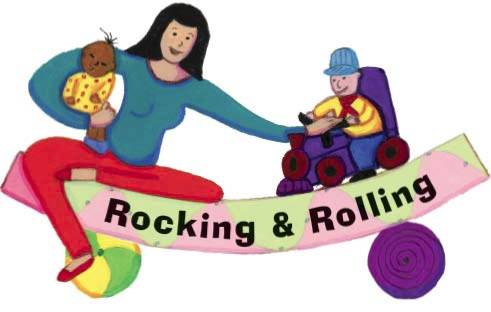Conducting home visits allows educators to better understand a child’s home environment, establish strong relationships with families, share tools and strategies that support families in learning about child development, emphasize parents’ role in being their child’s first teachers, and identify ways to incorporate a family’s culture into the child care setting.
by Mary Newnam Block
Emily has just started working with a new infant and toddler program, after having provided care for infants and toddlers for many years. One of the ways this program shares information with families is through home visiting. Emily has never been on a home visit before, and is a little nervous and skeptical about what to expect. The director pairs her with a more experienced staff member who shadows her on a few home visits before Emily attempts one on her own. Once Emily makes a few visits alone, she is surprised and pleased by how much useful information she gains about the children and families she works with. She finds herself looking forward to these visits as a new and valuable part of her work.
Why conduct home visits?
Conducting home visits as part of infant and toddler caregiving exemplifies best practice. The National Infant & Toddler Child Care Initiative (NITCCI) states, “The implementation of home visits is a hallmark of high quality in an infant/toddler care setting” (2010, 34).
Conducting home visits allows educators to better understand a child’s home environment, establish strong relationships with families, share tools and strategies that support families in learning about child development, emphasize parents’ role in being their child’s first teachers, and identify ways to incorporate a family’s culture into the child care setting. As in Emily’s experience in the opening vignette, many programs find that home visiting provides teachers with a broader perspective on the children in their care and helps families learn more about their children. These benefits are evident even with only occasional visits to a child’s home (NITCCI 2010).
Lally and Mangione (2006, 18) suggest that responsive curriculum and positive learning include “building ways to optimize program connections with children’s families.” This impacts children’s later development in school and in life. Curtis and Carter (2008, 26) talk about the relationship between the family and the child care provider as a two-way street. When a teacher makes a home visit with an incoming family, “she asks the family members what they would like her to know about them and how she can support them as they send their child to her classroom.”
What do you do on home visits?
Emily’s first solo home visit is with 15-month-old Peter and his family. During the visit, she sees the environment and routines he experiences at home on a daily basis. She observes many interactions between him and his parents, siblings, and extended family. Emily tells Peter’s mom, Alison, that she has a hard time helping Peter settle down for a nap at the center. Emily then asks about his nap and bedtime routine at home. Peter’s mother agrees that getting Peter to sleep is difficult. Alison explains that someone reads to Peter until he falls asleep. This conversation provides Emily with important information about Peter that she didn’t know before. She now has information that she can use to help her identify new strategies for calming Peter before nap time at the center.
During her next home visit, Emily meets with the family of 2-year-old Jamal, who is new to the program. As part of the visit, Emily shares photos and stories about what Jamal does in child care. She also discusses his results on the program’s screening instrument. Emily has found home visits to be an excellent time to review screenings and ongoing assessment with parents, when all of them have the time to discuss their observations, the child’s progress, and any concerns they might have. Jamal’s mother asks if her son’s speech is at the same level as that of other children his age. Emily hears the concern in her voice and takes time to talk about what she has observed of Jamal’s speech during his first few weeks in the center. She lets Jamal’s mom know that although he is a little quiet, she has observed his communication skills, and he is progressing well.
Emily and Jamal’s family also talk about ways to increase his vocabulary and create opportunities for more conversation during daily routines. Emily notices that the family has a fish tank. Now she understands his interest in fish and tells his parents how excited he gets when they read about fish. They talk about how they can build on Jamal’s interest in the fish tank while supporting his communication skills. The suggestions they come up with include water play with toy fish and other sea animals at home and in the program. They also decide to find and read books to Jamal about fish and the sea. Together, Emily and Jamal’s parents decide to exchange notes about Jamal’s play at the beginning and end of each day, so they can each talk with him about his experiences at home and in the early childhood setting.
Home visits allow Emily to learn about the cultural traditions of the children in her care. When she calls to arrange a visit with the family of 6-month-old Kanita, she finds that she needs to talk with Kanita’s grandfather first to explain the purpose of her visit. In Kanita’s culture, the eldest male, in this case her grandfather, must be consulted before strangers can be welcomed into the house. Once he agrees to the visit, Emily meets with him before talking with Kanita’s mother. When Emily demonstrates respect for the family’s culture and traditions, it strengthens the family’s relationship with her. It also benefits Kanita.
Many programs find that home visiting provides teachers with a broader perspective on the children in their care and helps families learn more about their children.
During the first few months of Kanita’s life, one of the roles of Emily and Kanita’s parents and grandparents is to support her developing sense of self. Research in recent years shows that when families and caregivers consistently read the baby’s cues and respond in similar ways, the baby learns to trust the caregiver and experiences a greater sense of security both at home and in the caregiving setting (Lally & Mangione 2006). When Kanita senses that her grandfather, her parents, and Emily trust and respect one another, her sense of trust, safety, and security grows.
Conclusion
Feelings of curiosity, anxiety, and even resistance can be typical responses of both the teacher and the family before the first home visit. But in practice, home visits are a rich arena for sharing and discussing information about children and caregiving with families on their turf. They are also a valuable source of learning for professionals, as they offer many opportunities to learn more about families’ everyday realities, daily routines, and cultural traditions. Like Emily, many early childhood professionals find that after overcoming initial resistance, home visits quickly become one of the most valued and useful tools they have to build stronger relationships with families and learn more about the children in their care.
Think about it
- Think about the times you have visited friends or acquaintances with a young child (not as part of a home visit). What did you notice about the child, the parents, and how the family functions?
- How can knowing about the differences between children’s lives at home and at the program contribute to a teacher’s effectiveness?
- Think about your own home and family. If a teacher were to visit your family, what might they learn about you that they wouldn’t see outside of that environment?
Try it
- Read an article about home visiting and discuss it with colleagues.
- Talk with other colleagues, such as early intervention professionals, who conduct home visits as part of their work.
- If you don’t already conduct home visits, discuss the possibility with your supervisor to see if there are ways to incorporate them into your program. Start small, such as conducting one visit for each child’s family at the beginning of the year and one at the end.
References
Curtis, D., & M. Carter. 2008. Learning Together With Young Children: A Curriculum Framework for Reflective Teachers. St. Paul, MN: Redleaf.
Lally, J.R., & P. Mangione. 2006. “The Uniqueness of Infancy Demands a Responsive Approach to Care.” Young Children 61 (4): 14–20.
NITCCI (National Infant and Toddler Child Care Initiative). 2010. Infant/Toddler Curriculum and Individualization. Washington, DC: NITCCI. www.zerotothree.org/public-policy/state-community-policy/nitcci/multidisciplinary-consultant-module-3.pdf.
Copyright © 2014 by the National Association for the Education of Young Children—1313 L Street NW, Suite 500, Washington, DC 20005. See Permissions and Reprints online at www.naeyc.org/yc/permissions.



